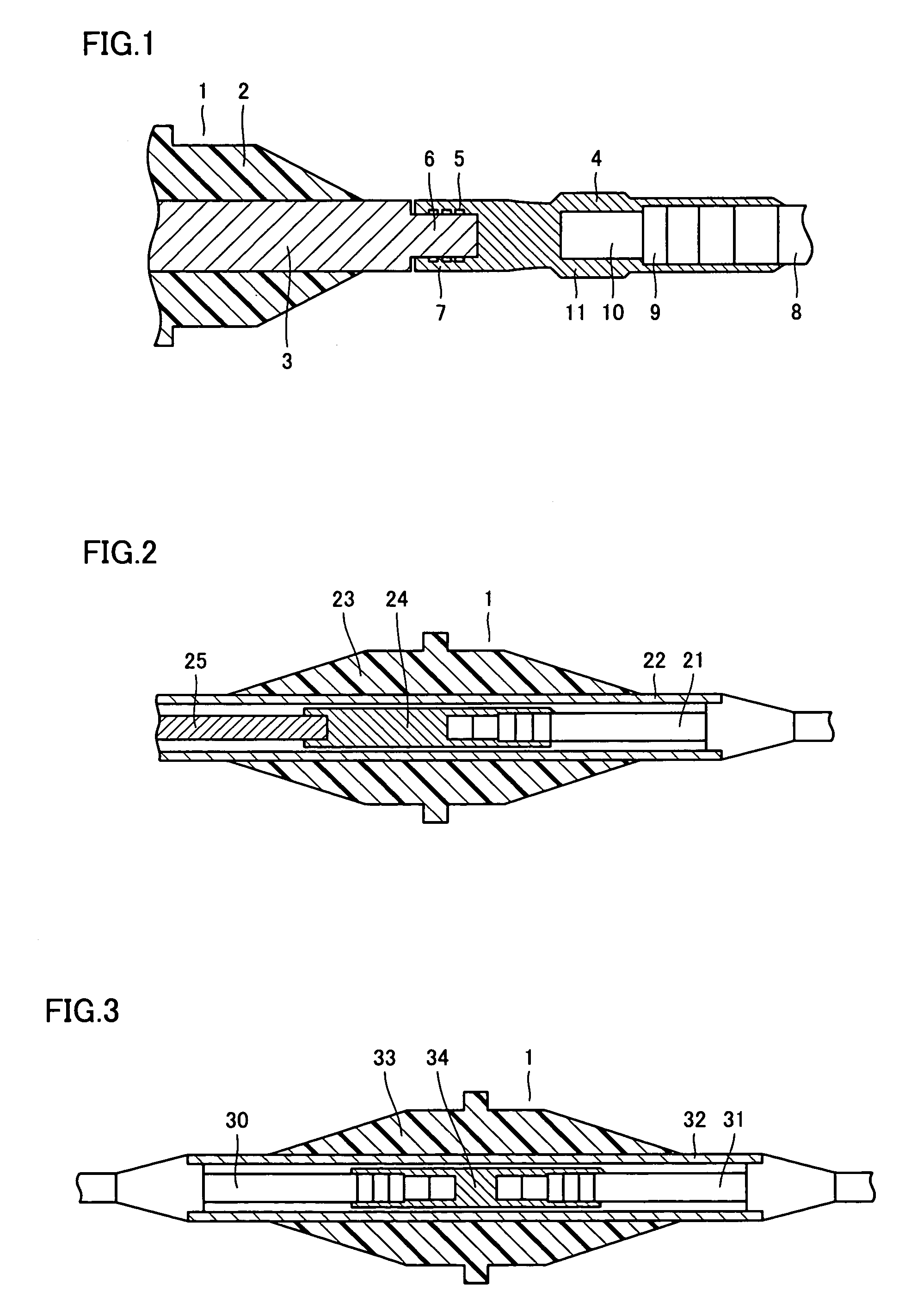Joint structure of superconducting cable and insulating spacer for connecting superconducting cable
a superconducting cable and insulating spacer technology, applied in the direction of connection contact member materials, superconductor devices, coupling device connections, etc., can solve the problems of reducing the service life of the superconducting cable. , to achieve the effect of reducing the length of the joint structure in the longitudinal direction of the cable and facilitating the connection
- Summary
- Abstract
- Description
- Claims
- Application Information
AI Technical Summary
Benefits of technology
Problems solved by technology
Method used
Image
Examples
second embodiment
[0043]In the case where a metal having aluminum as its main body is used for central conductor 3 and a metal having copper as its main body is used for conductor connecting member 4, it is difficult to achieve connection of sufficient strength with soldering or brazing between the metals of different kinds. To solve this problem, the present invention employs multi-contact connection as described above.
[0044]Specifically, in the example shown in FIG. 1, multi-contact connection is used for connection between central conductor 3 and conductor connecting member 4. More specifically, conductor connecting member 4 has a concave portion 7 at its end. Concave portion 7 has an inner periphery provided with three grooves 5, with a conductive elastic body (not shown) inserted therein. Provided at an end of central conductor 3 is a projecting portion 6 having a diameter slightly smaller than the inner diameter of concave portion 7. Projecting portion 6 is inserted into concave portion 7.
[0045...
third embodiment
[0047]In the present invention, central conductor 3 and conductor connecting member 4 are connected to each other by friction welding, rather than multi-contact connection. In the friction welding, portions of the members to be connected (in the example of FIG. 1, central conductor 3 and conductor connecting member 4) are brought into contact with each other, and one of the two members is rotated (or the both members are rotated at different speeds in different directions from each other) to generate heat by contact friction. With the rotation stopped, the members are bonded by means of the frictional heat generated and a pressure applied to the connecting portion. With this friction welding, again, the connection between central conductor 3 and conductor connecting member 4 can readily be achieved even at a site where the terminating portion is to be placed, and the connecting portion allows a large amount of current to flow therethrough.
fourth embodiment
[0048]Hereinafter, the present invention is described.
[0049]Conductor connecting member 4 shown in FIG. 1 has its other terminal connected to a terminal of superconducting cable 8. Superconducting cable 8 in the example of FIG. 1 has a structure similar to that of the conventional superconducting cable shown in FIG. 6.
[0050]Specifically, superconducting cable 8 of the fourth embodiment has a former 10 made of a metal wire at the core, which is covered with a superconducting layer 9, an insulating layer, a shield layer and a protective layer in this order. At the portion to be connected with conductor connecting member 4, the insulating layer, the shield layer and the protective layer are removed, and the respective layers of superconducting layer 9 and former 10 are exposed stepwise.
[0051]Superconducting layer 9 is connected to conductor connecting member 4 by soldering. In the example shown in FIG. 1, superconducting layer 9 is formed in four layers, which are each connected to con...
PUM
 Login to View More
Login to View More Abstract
Description
Claims
Application Information
 Login to View More
Login to View More - R&D
- Intellectual Property
- Life Sciences
- Materials
- Tech Scout
- Unparalleled Data Quality
- Higher Quality Content
- 60% Fewer Hallucinations
Browse by: Latest US Patents, China's latest patents, Technical Efficacy Thesaurus, Application Domain, Technology Topic, Popular Technical Reports.
© 2025 PatSnap. All rights reserved.Legal|Privacy policy|Modern Slavery Act Transparency Statement|Sitemap|About US| Contact US: help@patsnap.com



